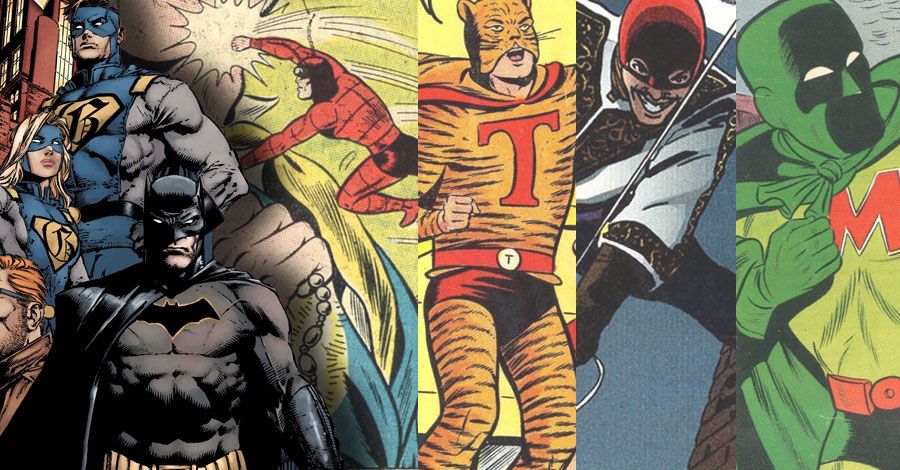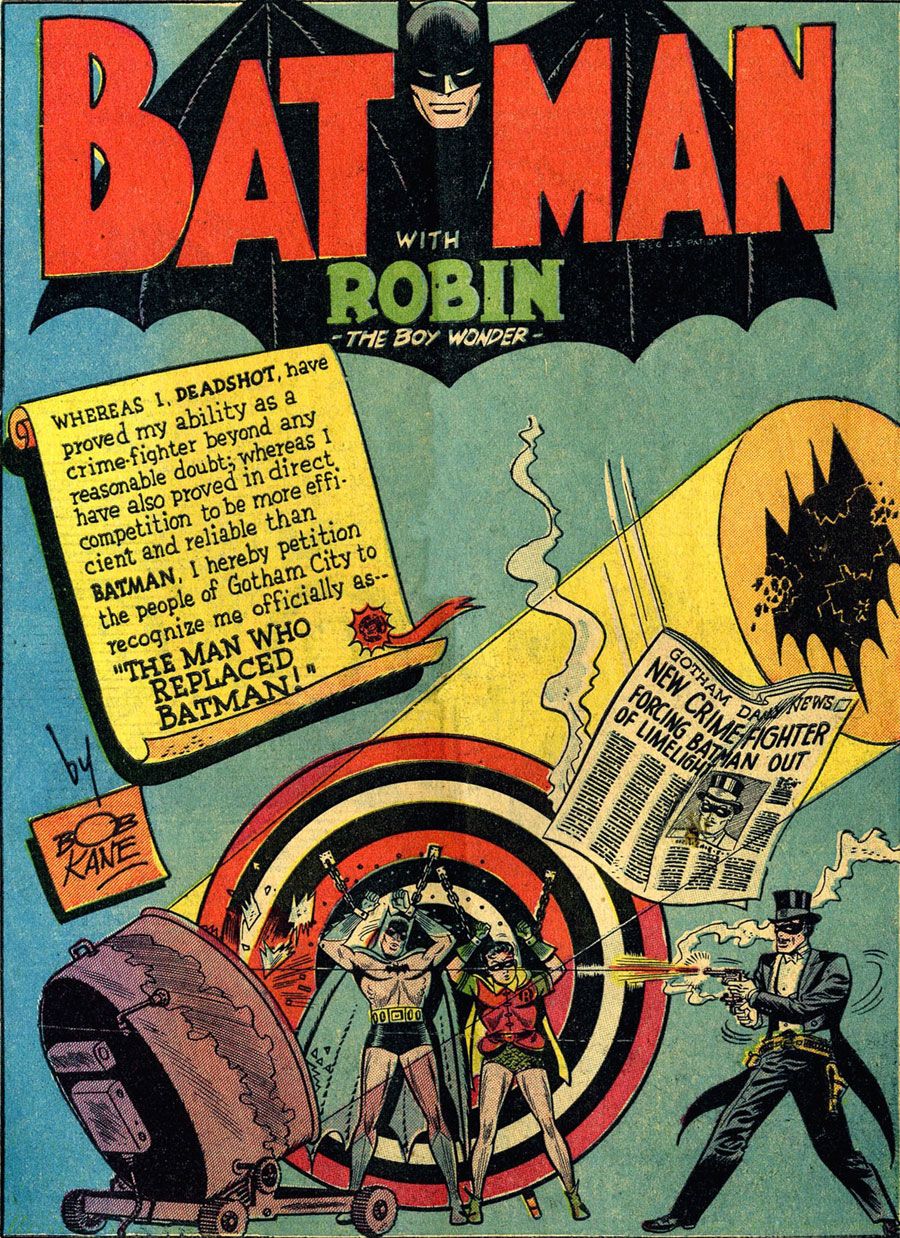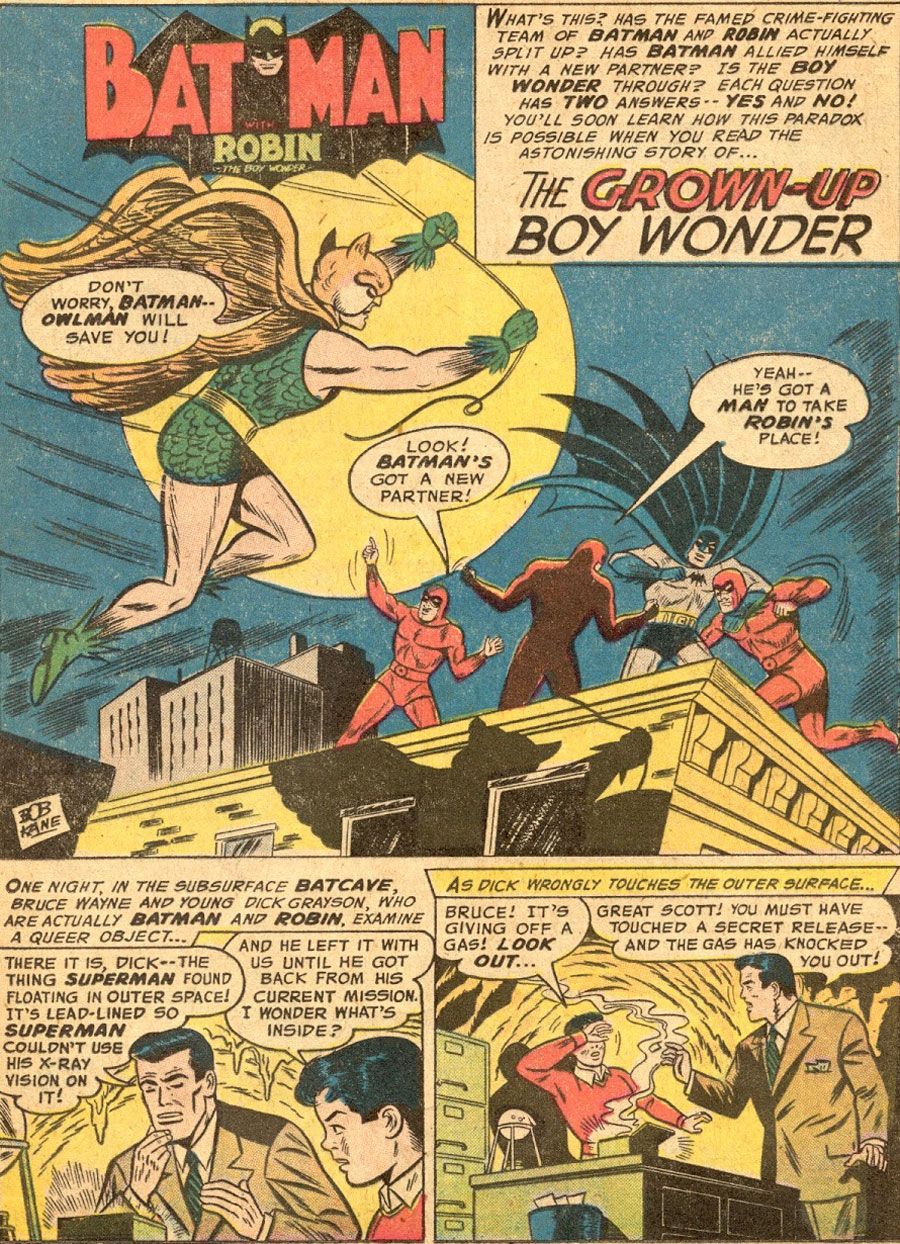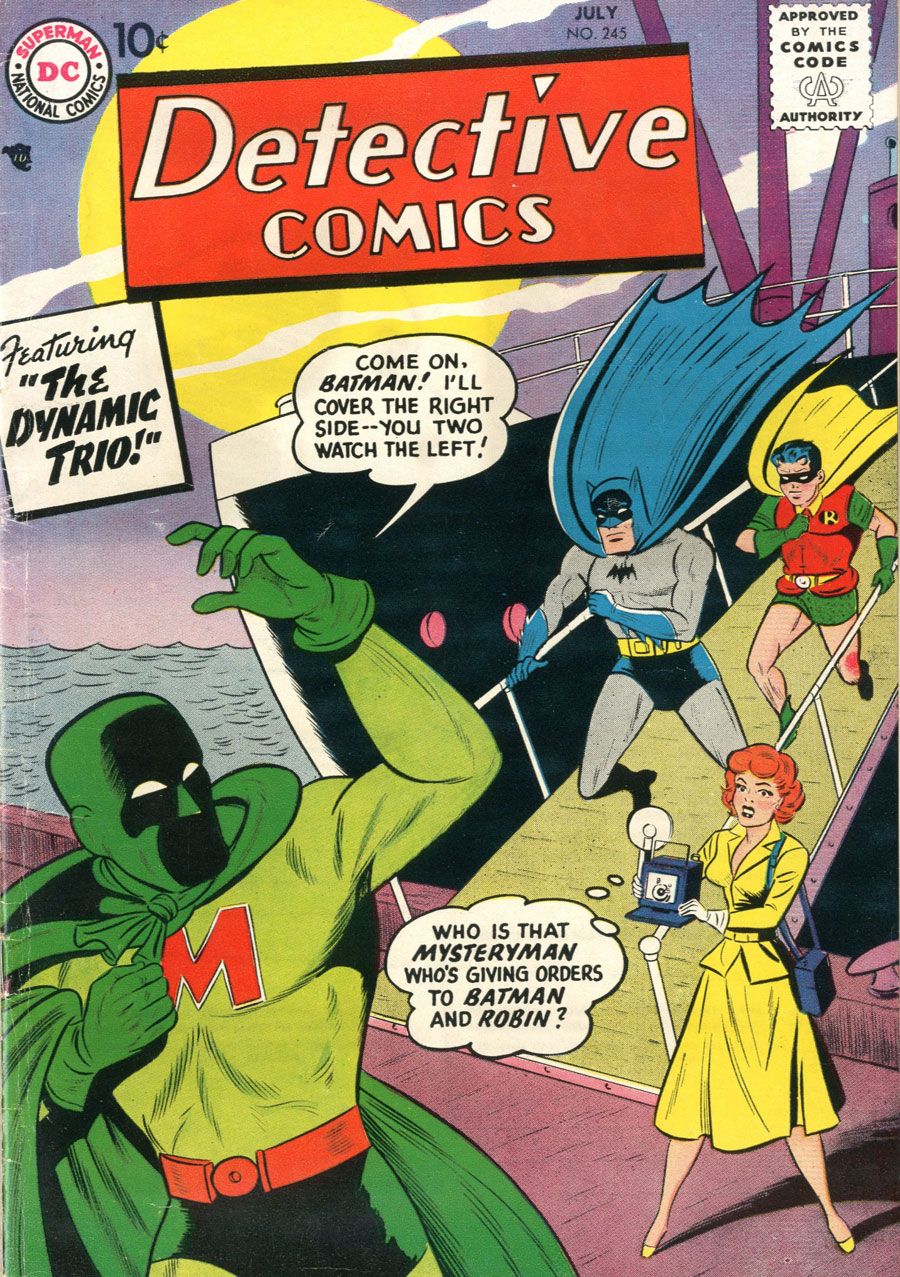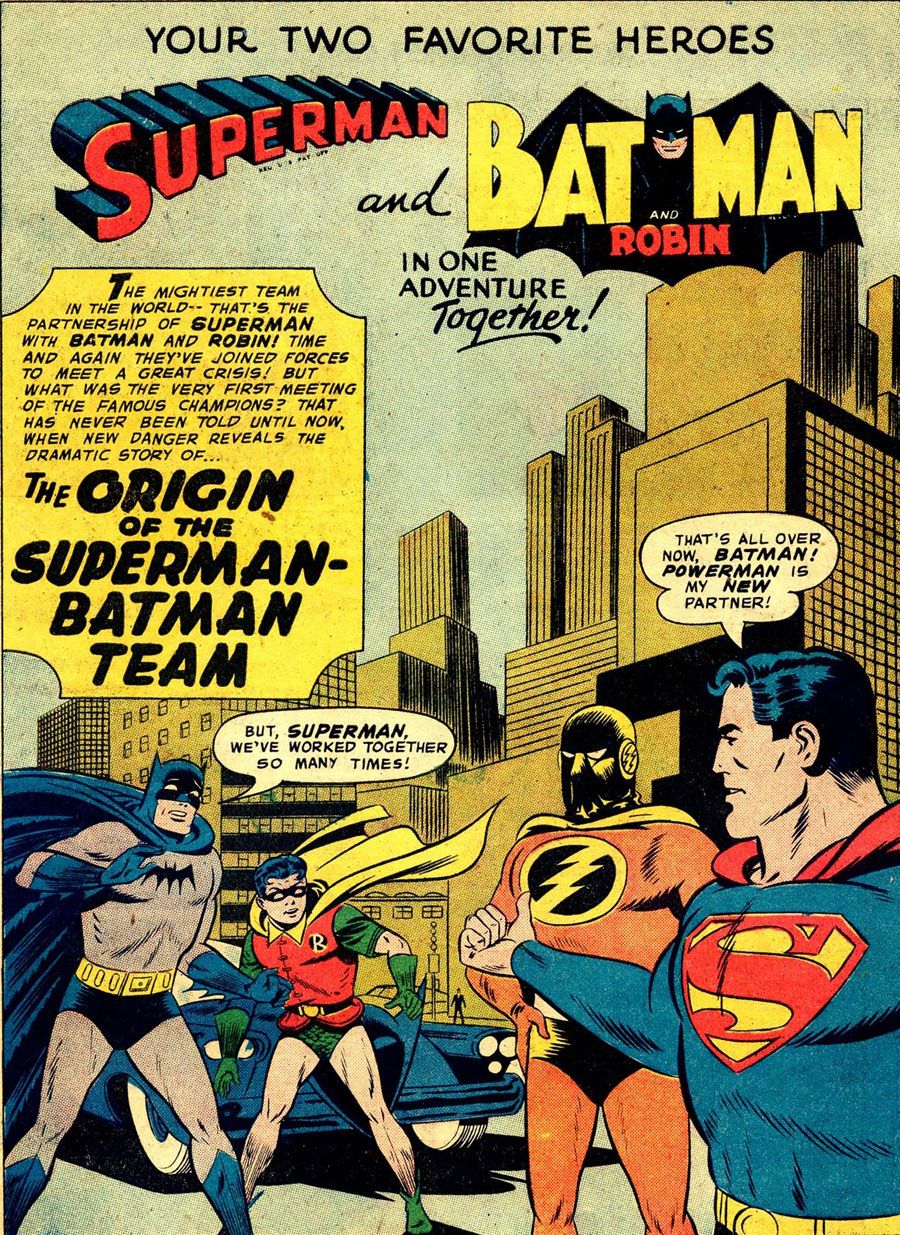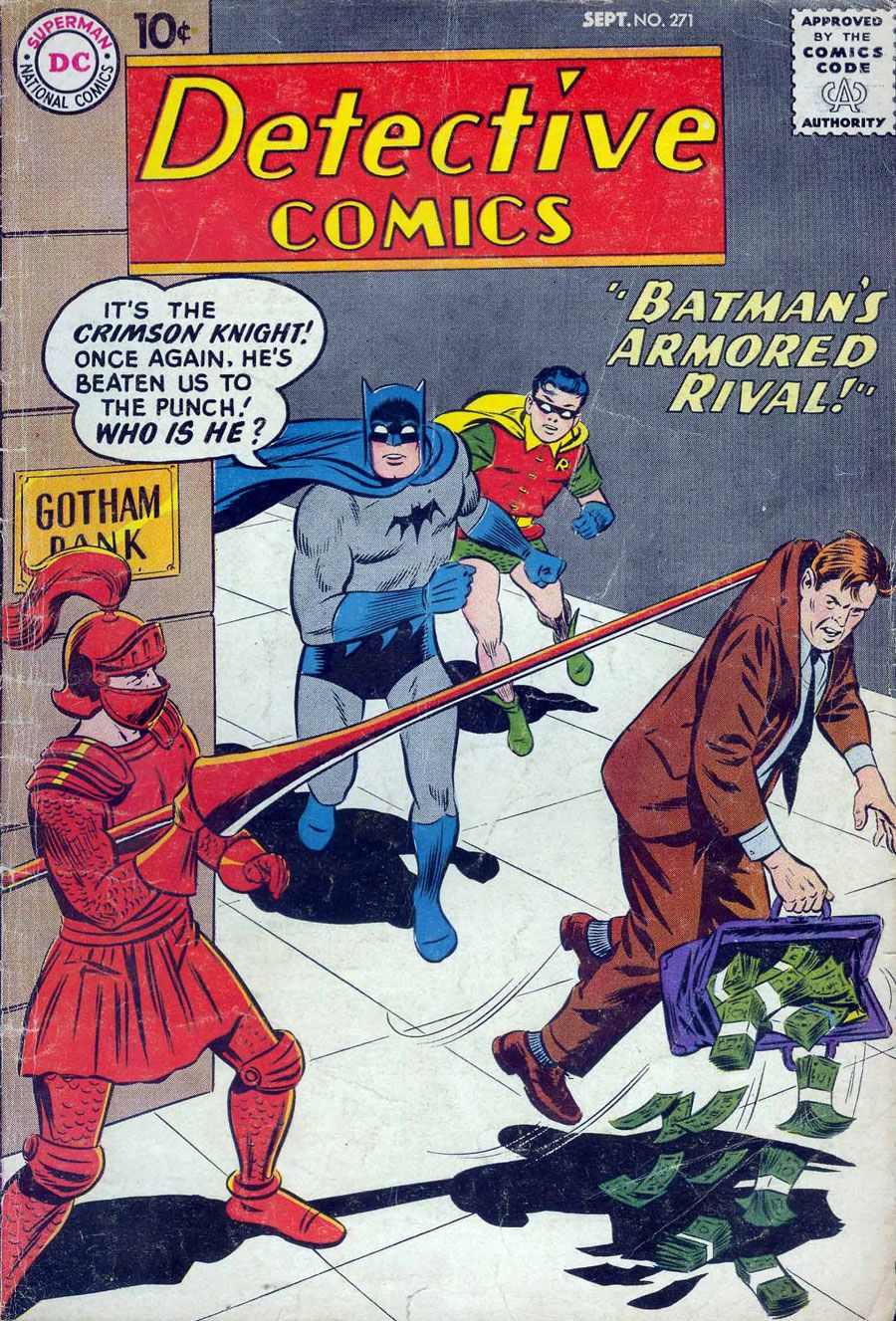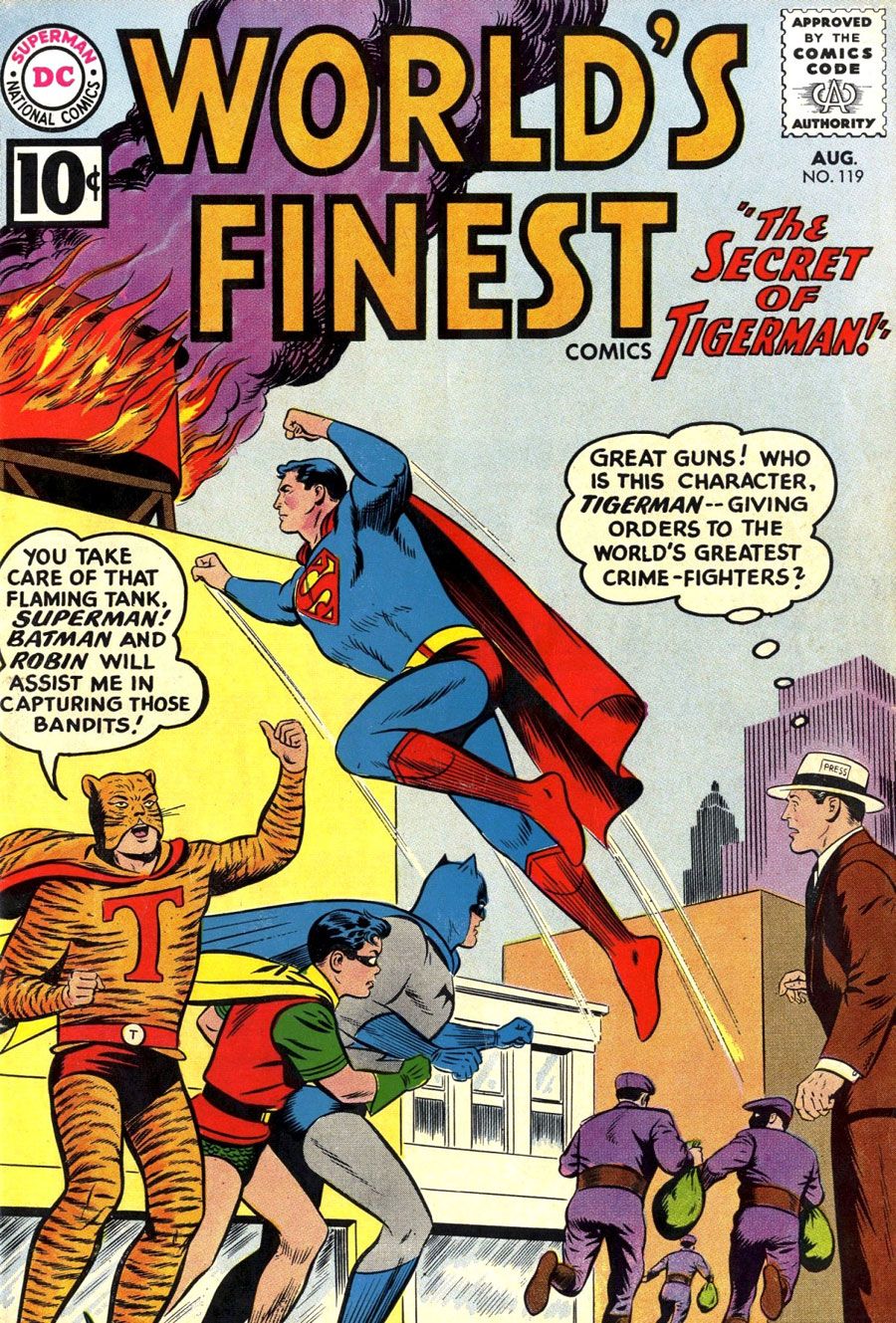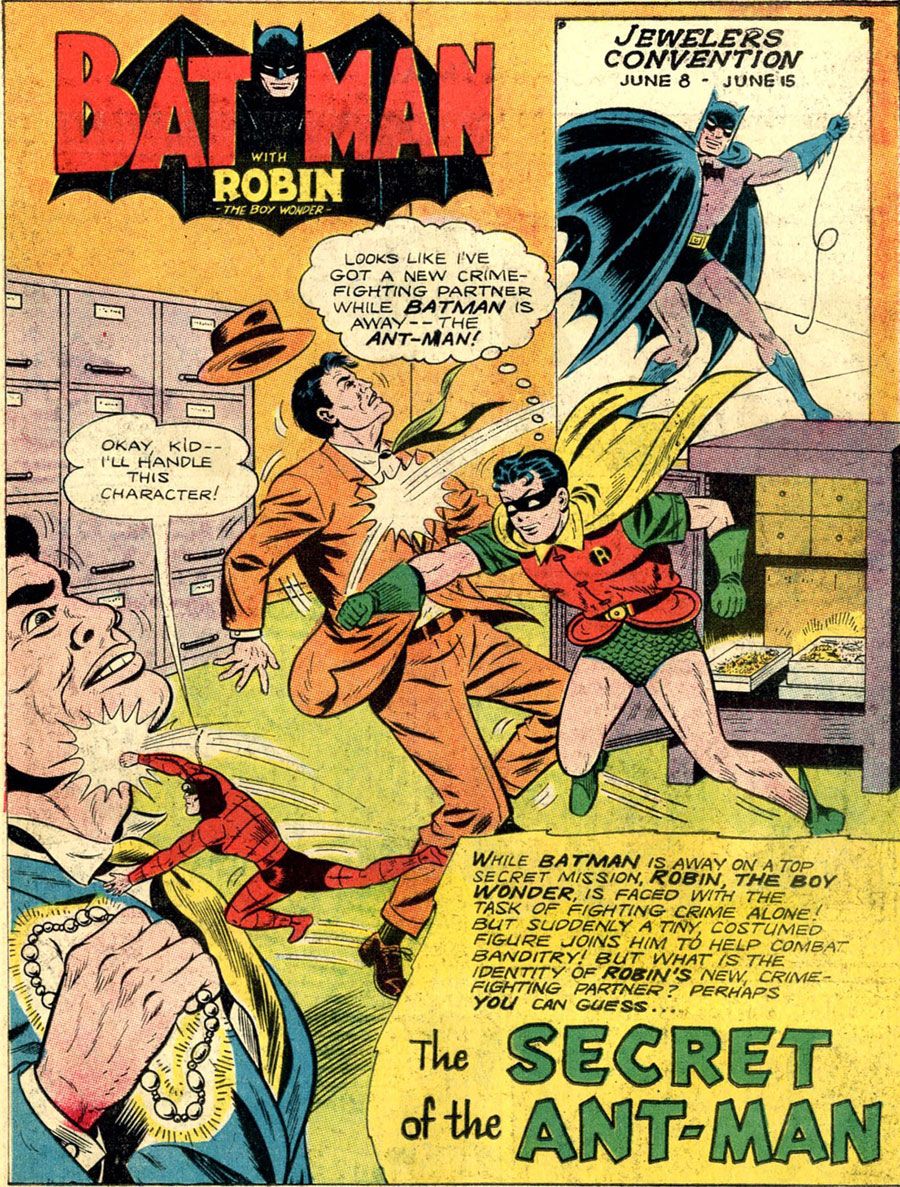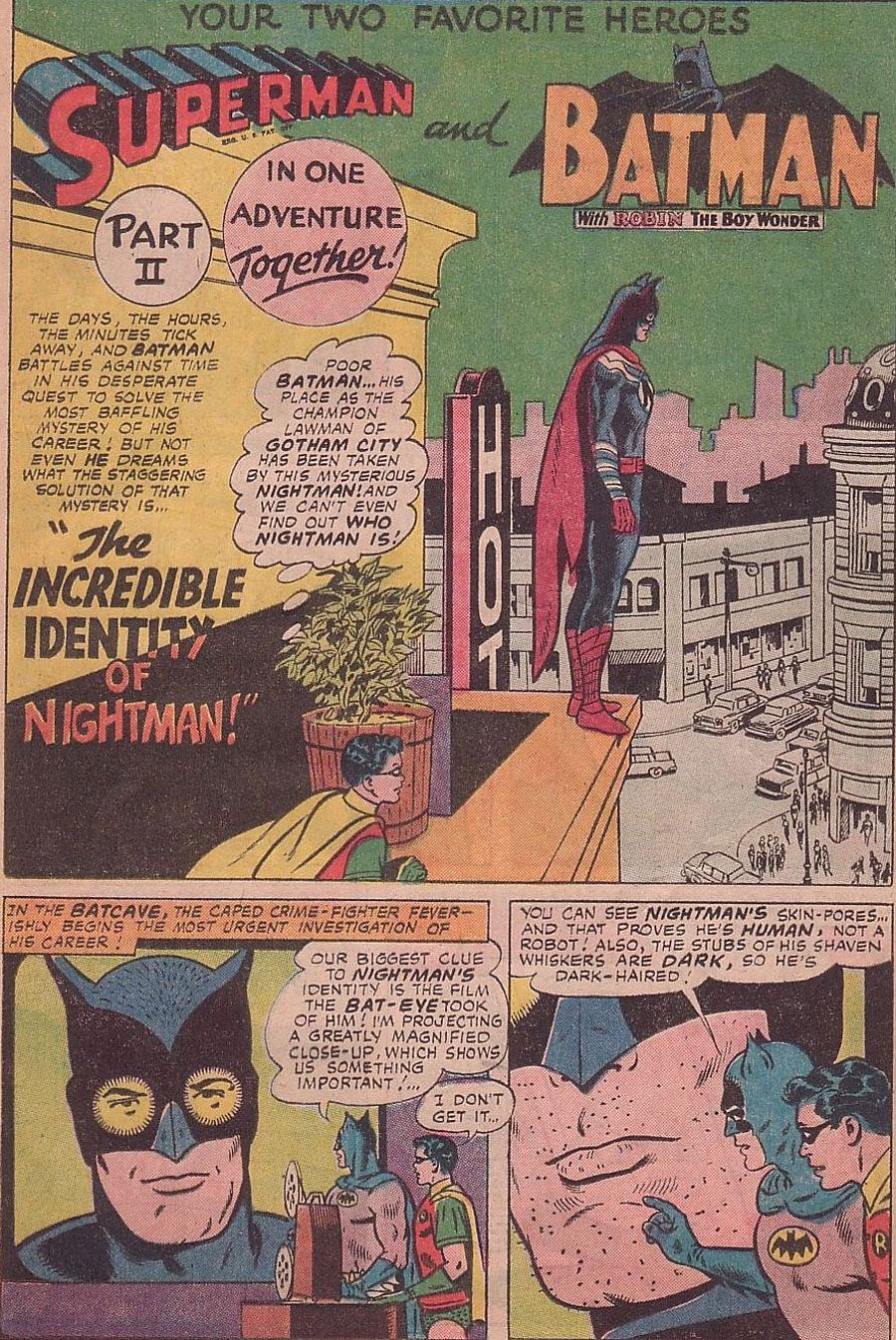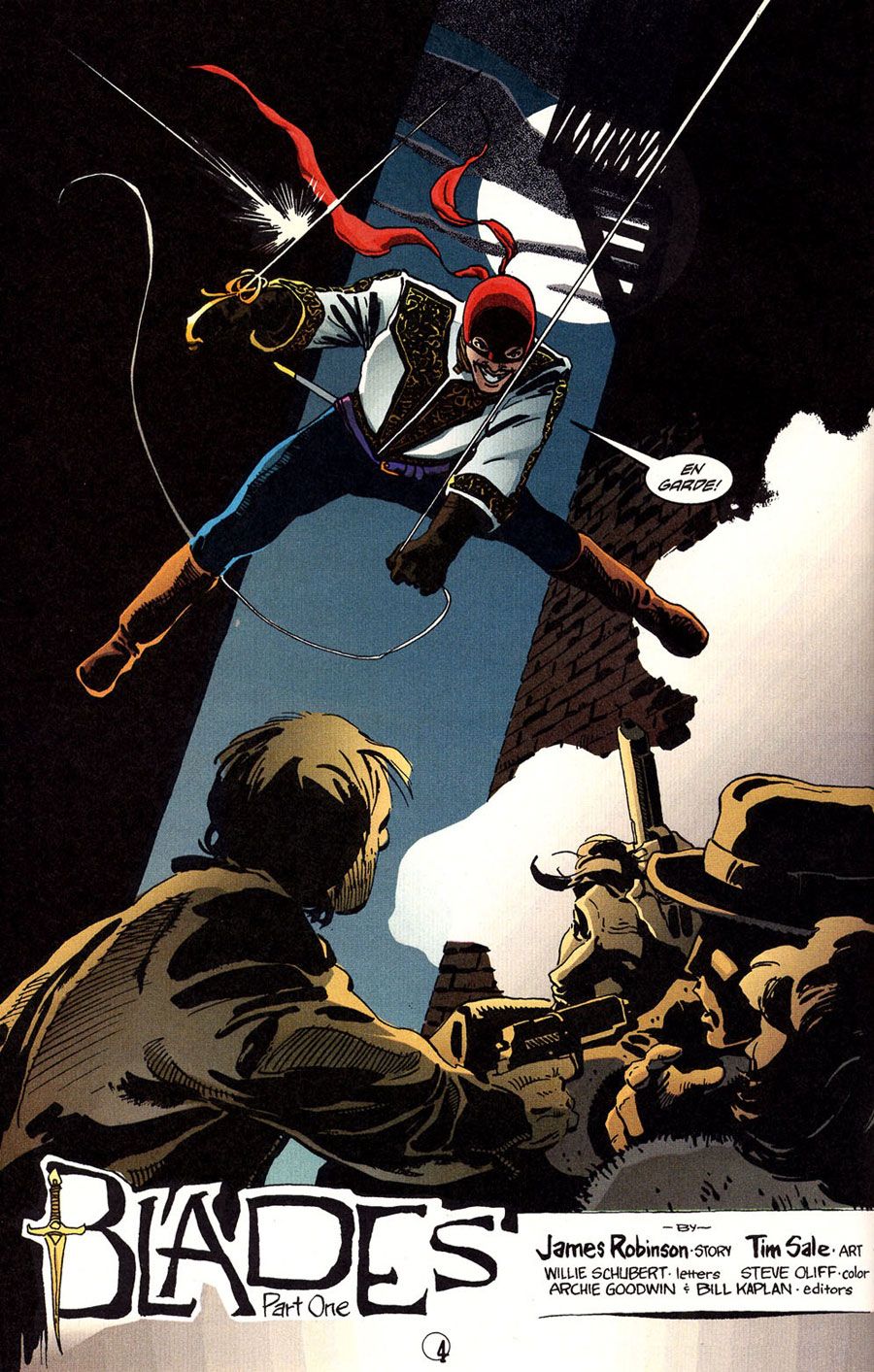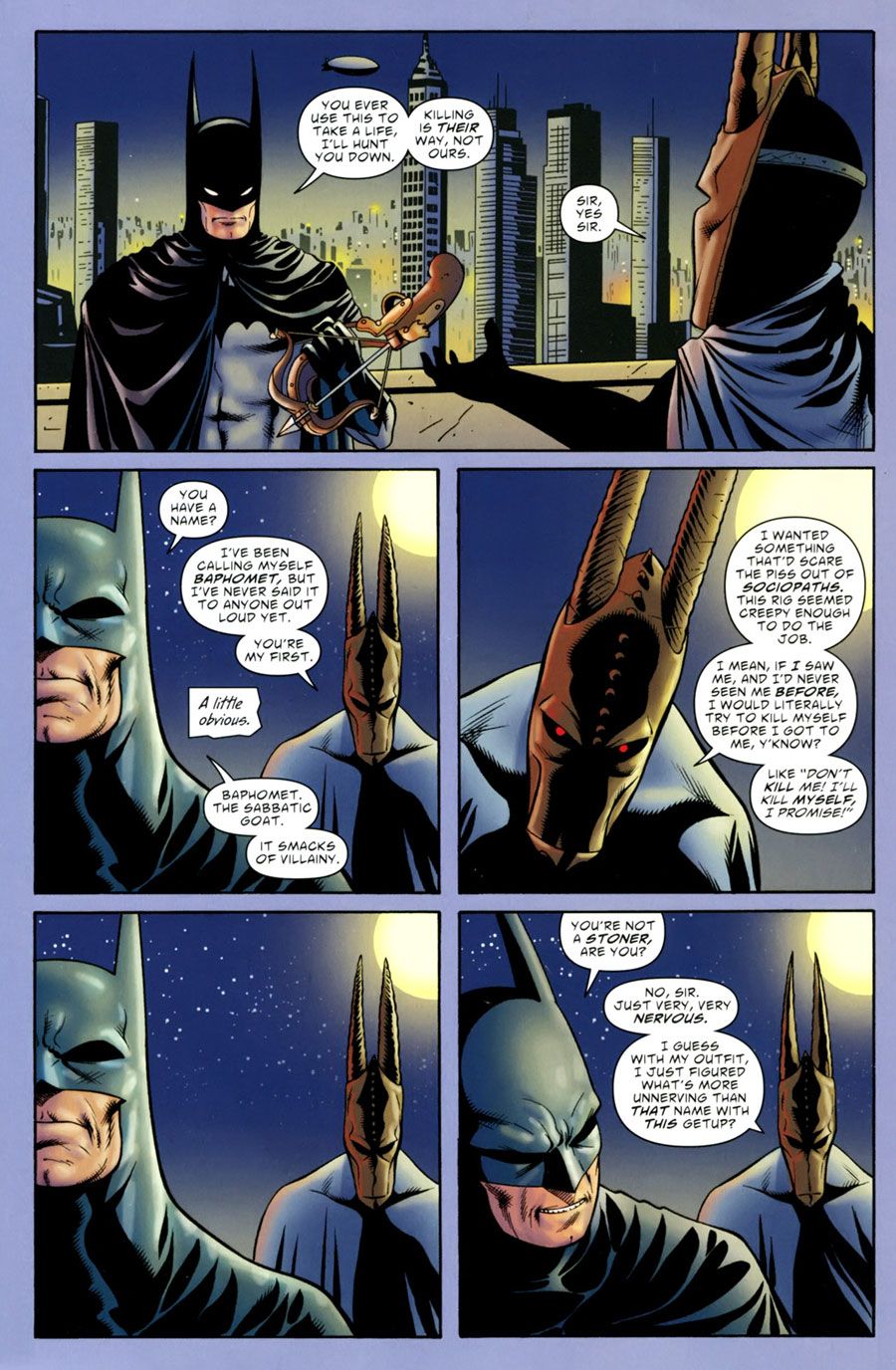In Tom King and David Finch's first issue of "Batman," the creative team dramatically introduced two new superheroes to the Dark Knight's world: Gotham and Gotham Girl. And, as the second issue showed, there is a bit of a mystery over whether Gotham and Gotham Girl are as heroic as they seem.
RELATED: In "Batman" #2, Two Dynamic Duos Are Poised to Shake Up Gotham
This, of course, is all part of a long tradition of mysterious superheroes showing up in Gotham City and turning out to be something other than they appear. Sometimes they're villains, sometimes they're heroes in disguise, but they almost always leave a major mark on Batman's world. Here are ten of the most significant characters who arrived in the Caped Crusader's city with one identity, and left with another.
10 Deadshot
Nearly forty years before he became a stalwart member of the Suicide Squad, Deadshot made his debut in 1950's "Batman" #59 (by David Vern Reed, Bob Kane and Lew Schwartz). Floyd Lawton was a fascinating character from the start; a rich socialite like Bruce Wayne, Lawton was a sharpshooter who became the hero known as Deadshot. As cities protected by superheroes seem wont to do, Gotham quickly turned on Batman and Robin and embraced its new hero.
As it turned out, Deadshot was secretly an up and coming gang lord who would arrest small time criminals in one location in order to distract everyone from major jobs being pulled by his own gang at the same time. Once he was exposed, Deadshot had a chance to kill Batman -- but the Dark Knight had altered all the sights on his guns, so Deadshot kept missing. Following his defeat, Deadshot was gone from comics for over two decades before Marshall Rogers gave him his now-iconic costume in "Detective Comics" #475, and the rest was history.
9 Owlman
A few years before the Crime Society of America debuted with an Owlman of their own (the evil opposite of Batman), a different Owlman debuted in 1957's "Batman" #107 (by Bill Finger, Sheldon Moldoff and Stan Kaye). This Owlman was an odd duck -- you see, Dick Grayson was exposed to a gas that transformed him into an adult. Batman, naturally, ordered him grounded as both Robin and as Dick, in case anyone saw the older Grayson with the older Robin and put two and two together. Dick was irritated, so he borrowed a masquerade costume Bruce once wore and went into action as Owlman. The result was a comedy of errors as Dick constantly forgot to adjust for his larger stature and he kept breaking or banging into things. Eventually, he was captured and unmasked, but Batman rescued him and, luckily, the gas wore off, preserving his true identity.
8 Mysteryman
A few months later, in the pages of "Detective Comics" #245 (by Edmond Hamilton, Sheldon Moldoff and Charles Paris), readers met a superhero with the apt name, Mysteryman, who was ordering Batman and Robin around on a case involving wanted criminals being smuggled overseas to commit crime in Europe. Earlier in the issue, Gotham City's mayor had chastised Commissioner Gordon for taking too long to stop the smugglers. Thus, the mayor said, Gordon should leave the case to Batman and Robin. Meanwhile, Vicki Vale attempted to figure out who Mysteryman is, running through all the old stand-bys (Superman in disguise, a robot, etc.) but in the end, she figured out that it was Commissioner Gordon! Having been told to turn the case over to Batman and Robin, and not wanting to to defy the mayor, he decided to work alongside them as a superhero!
7 Powerman
Okay, the entire issue doesn't take place in Gotham City, but enough of it does that we're including it here In 1958's "World's Finest Comics" #94 (by Edmond Hamilton, Dick Sprang and Stan Kaye), Lex Luthor escaped from prison. Batman and Robin figured that they would come in handy for Superman to take down Luthor because they were not vulnerable to kryptonite. They were shocked, therefor, to learn that Superman didn't want them working with him on this case because he had a new partner, Powerman!
Batman and Robin refuse to take no for an answer, and hunt down Luthor, stopping him before he could use his kryptonite on Superman. As it turned out, Powerman was a robot Superman had built so it could pick up the kryptonite. As for why he didn't clue his friends in on his plan, Superman later explained that when Luthor broke out, he used a destructive energy beam and Superman thought that it would be too dangerous for Batman and Robin. Kind of condescending of Superman, but we're sure he meant well.
6 Crimson Knight
In 1959's "Detective Comics" #271 (by Dave Wood and Sheldon Moldoff), Batman and Robin meet a mysterious new hero known as the Crimson Knight. The Knight wore a medieval suit of armor, but was armed with high tech gadgets, including an electric sword. He foiled crimes of all the major gangs in Gotham City, quickly becoming a well-respected hero.
As it turned out, however, the whole thing was a ruse. The Crimson Knight was actually Dick Lyons, the head of one of the very gangs the Crimson Knight targeted! You see, Lyons' plan was to get himself into a position of trust order to land the assignment of guarding an extremely valuable shipment of documents. Luckily, Batman figured out he was a crook, and he and Robin arrested the faux-hero.
5 Tigerman
1961's "World's Finest Comics" 119 (by Jerry Coleman, Dick Sprang and Stan Kaye), introduced a brand-new hero known as Tigerman. From the start, the hero was seen ordering Batman, Superman and Robin around as they all tried their best to stop the head of a powerful new criminal organization known as the Purple Legion. The head of the group was General Grambly, who used his military expertise to help the crooks pull off crimes with precision. Plus, he made sure never to go out in public, lest he be captured.
Tigerman, however, seemed to throw a new wrinkle into Gotham's superhero hierarchy. He bossed Batman, Robin and Superman around, but he was an incompetent hero. He constantly screwed up, as the heroes kept failing to stop the Purple Legion. Ultimately, Tigerman made it clear that the only reason he was in charge was because he knew the secret identities of the Dynamic Duo and the Man of Steel! General Grambly couldn't help but be interested in that, so he had Tigerman captured. Before he could interrogate him, however, Tigerman revealed himself to be Superman in disguise (with a robot playing the role of the Man of Steel)! They intentionally made Tigerman look incompetent (and filled with such valuable information) so Grambly couldn't help but show himself in person to interrogate him!
4 Ant-Man.
In 1963's "Batman" #156 (whose second story is the famous "Robin Dies at Dawn") (by Bill Finger, Sheldon Moldoff and Charles Paris), Batman was away on a secret mission, leaving Robin all alone. Then, a mysterious, shrinking hero calling himself Ant-Man showed up.
Showing how little trust there was in their relationship, Robin assumed that Ant-Man was Batman in disguise, so he teamed up with the new hero to stop a dangerous gang. After they stopped the gang, however, Ant-Man stole the jewels that the gang had originally pilfered, and escaped. Realizing Ant-Man was a crook himself, Robin tracked down the professor who had developed a shrinking formula -- just as Ant-Man had, apparently. It turns out, Ant-Man was a crook who was shot and floated down a river -- right by the spot where chemicals poured out of the professor's lab! Ant-Man was eventually arrested, but they didn't have a cure for his shrunken condition.
3 Nightman
In 1966's "World's Finest Comics" #155 (by Edmond Hamilton, Curt Swan and George Klein), Superman and Batman are prepared to celebrate their 1,000th case working together. At the same time, Superman was spending more and more time with a mysterious new superhero known as Nightman instead of hanging out with Batman.
Deciding to figure out who Nightman was, Batman's investigation led him to confront the hero at the party for Superman and Batman's 1,000th case. Nightman defeated Batman easily, however, and insisted that he be named Superman's best partner. Superman, though, knew that it was not the real Nightman -- it was a robot Batman designed to make it look like he had lost to Nightman. You see, Batman had figured out the truth -- Superman had hypnotized Batman into becoming Nightman! The whole thing was Superman's present to Batman -- a super-difficult mystery to solve! Superman gives out weird presents, people.
2 Cavalier
Based on a Golden Age Batman villain, the Cavalier made his debut in 1992's "Legends of the Dark Knight" #32, the first part of a three-part storyline, "Blades," by James Robinson and Tim Sale. Here, instead of being an outright villain like in the Pre-Crisis continuity, the Cavalier was a hero.
Arriving in Gotham City while Batman was devoting all of his time to tracking down a serial killer known as Mr. Lime, the Cavalier quickly became a famous hero. Batman actually ended up a fan of him, as well -- he reminded Batman of his childhood (Bruce Wayne was a Zorro fan, after all), and the Cavalier's upbeat attitude while fighting crime was an inspiration to the brooding hero. In the end, though, it turned out that the Cavalier was weak-willed, quickly turning to a life of crime when he realized just how easy it would be for him to steal things.
1 Baphomet
The year-long (2009-2010) six-issue miniseries, "Batman: The Widening Gyre" (by Kevin Smith, Walt Flanagan and Art Thibert) saw Batman deal with confronting the past while reuniting with his old love, Silver St. Cloud, in the present. All of this while a new hero in Gotham (a goat-themed character known as Baphomet) seemed to represent the future. As the series went along, and Batman drew closer and closer to Silver, he also became friends with Baphomet. The two heroes bonded and, in the final issue, Batman finally decided to open himself up to his new hero friend, inviting him into Batcave and revealing his secret identity. Just as Batman was doing that, though, Baphomet was slicing Silver St. Cloud's throat. Baphomet was actually Onomatopoeia, the villain Batman had fought in the previous Smith/Flanagan miniseries, "Batman: Cacophony."
Frustratingly enough, the storyline has never been completed, leaving fans wondering for over half a decade whether Silver somehow survived her throat being sliced open.
The lesson learned from all of this, of course, is that sometimes mystery heroes turn out to be bad guys, sometimes they turn out to be good guys -- and sometimes they turn out to be robots. Time will tell which category Gotham and Gotham Girl fall into!

